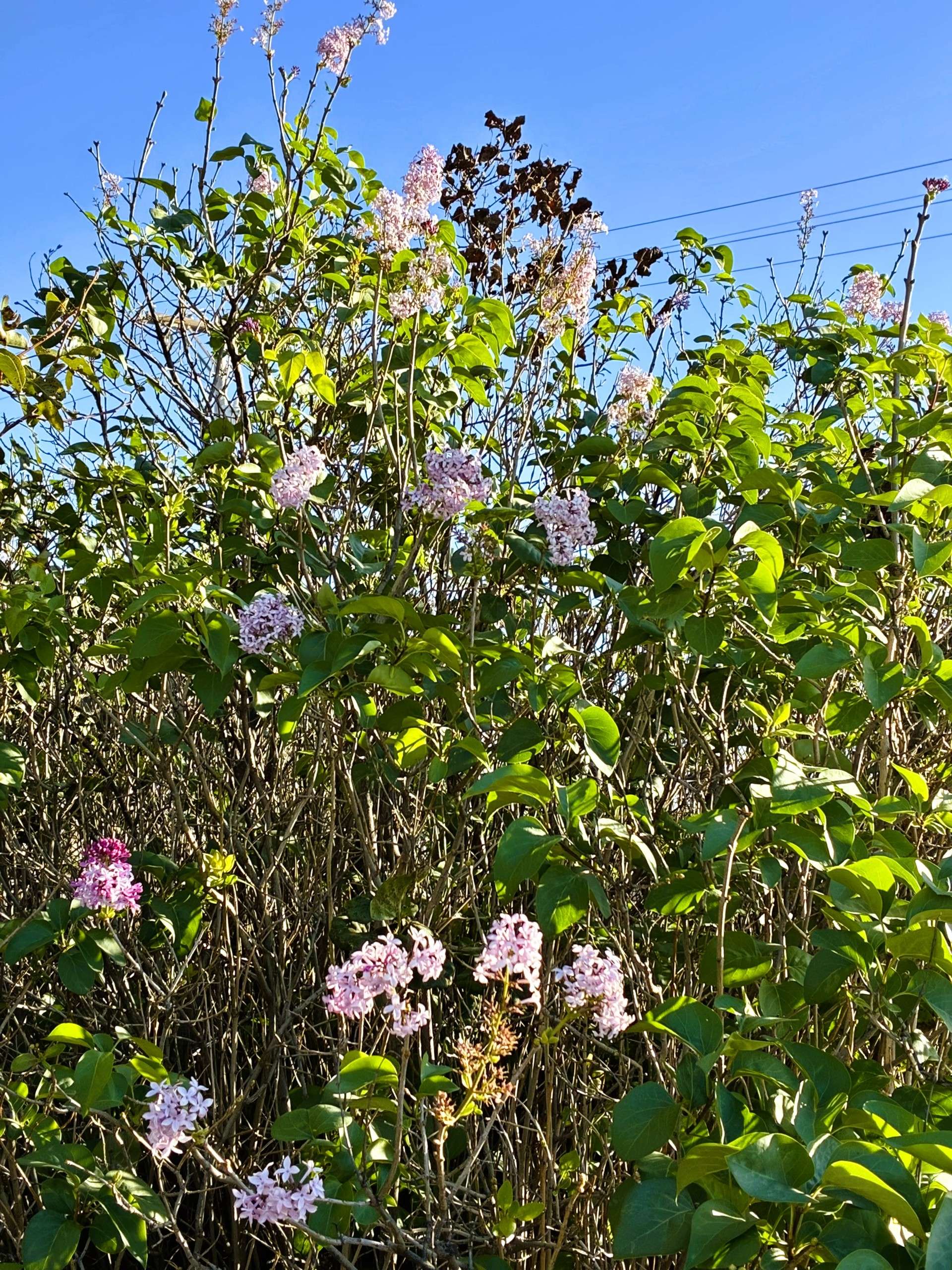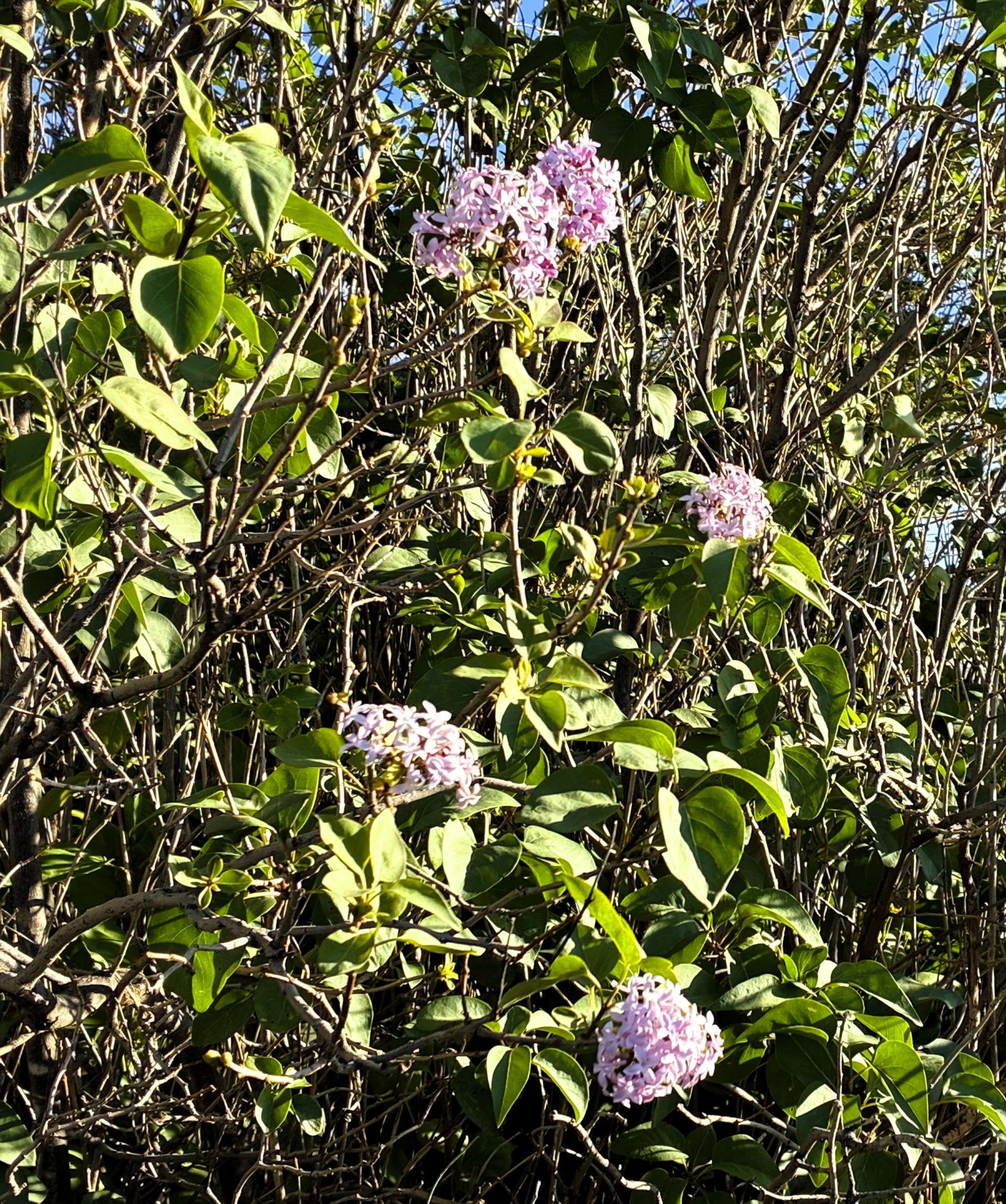
By KAREN MADORIN
Drive around prairie communities or rural farmsteads, and you’ll find numerous overgrown lilac hedges attesting to early residents’ fondness for this sweet-scented flower. These rows of easy-to-grow woody bushes require little attention even during harsh weather and when mature, break gusty winds around a house, outbuilding, or patio. As a bonus, they perfume spring breezes about the time housekeepers throw open windows to freshen winter-stale rooms. Like poppies, daffodils, iris, and other spring flowers, their short blooming season invites folks to appreciate them when those multitudinous tubular blooms are most glorious. To my surprise, Western Kansans got another chance to see a favorite flower during this autumn’s unusual second bloom.
A few weeks ago, I noted local lilac bushes producing their signature palm perfect bouquets—again…. To my marveling eye, hedges set enough blossoms a person could create several lovely lavender arrangements. Granted, these weren’t densely flowered like we expect each spring, but it was notable due to the number of out of season blooms on each plant. I made a point of driving around towns like Herndon, Oberlin, Hill City, and Atwood to note the same phenomena of lilacs blooming while tree leaves turned gold and orange. My first thought was Mother Nature is off her meds. Then I investigated.

Multiple horticultural journal articles explained stressed lilacs produce second blooms to guarantee survival of the species. My first thought was what stress? We had more rain and gentler temperatures this summer than we normally experience in Western Kansas. As I read university research articles, I discovered that just as humans experience continued stress with resulting symptoms, lilac bushes also suffer post-incident stress-induced consequences.
That made sense. Western Kansans have survived a sequence of drought years combined with periods of hot or frigid winds. To multiple those effects, most plains residents expect lilac hedges to take care of themselves. After all, that was one reason early settlers planted them. They don’t require focused attention to keep growing and blooming. Researchers suggest this possibly led to this year’s producing seeds twice to save the species reaction.
As a bonafide worrywart, I thought that this expenditure of extra energy in a second bloom might wipe out one of my favorite plantings. Those journal articles calmed my fears and let me know the hedges will most likely survive unless they have other issues. What did happen is the new buds that emerged after the spring bloom became this fall’s bouquets. This fall flowering will limit production of next spring’s blossoms. Next April and May, don’t count on as many perfumed breezes as we enjoyed this year.
Nature has so many ways of keeping us on our toes if we pay attention. While I’ve seen the odd lilac bloom out of turn, this is the first time in 8 decades I saw entire hedges producing multiple blossoms. Since that won’t likely happen again during my lifetime, I’ve purposely sought those out of season flowers and rolled down the window on warmish autumn days to enjoy Spring in the Fall.






